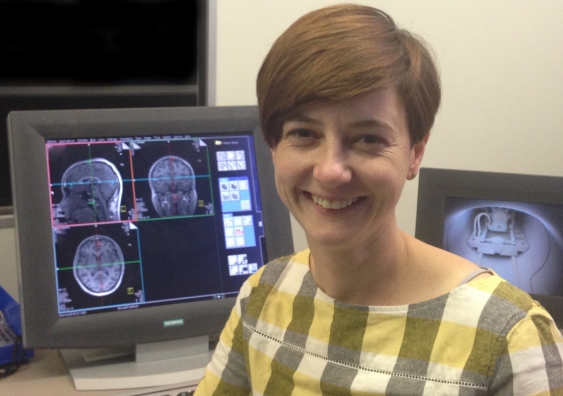UNSW scientist Dr Belinda Liddell, who works on the psychology of trauma, is one of five early career researchers who will undertake a two-week media residency at the ABC after being named a winner of the 2018 Top 5 science program.
For the first time, this year's Top 5 are all women. Demonstrating a flair and passion for communicating their research, they were selected from more than 150 applicants from universities and research institutes across Australia, and work in fields ranging from radio astronomy and advanced manufacturing to the use of exercise in cancer recovery.
Supported by ABC RN and UNSW Sydney, the five winners will work with some of Australia's best science journalists to train in the craft of radio, TV and digital communication and bring their knowledge and expertise to content-hungry audiences seeking science-based information, entertainment and debate.
The winners will undertake their ABC residency in July ahead of National Science Week in August.
The Top 5 are:
- Dr Belinda Liddell (UNSW Sydney), a psychologist who is working to understand why some refugees recover from trauma and displacement more quickly than others. She is also looking at how different cultures perceive and respond to emotions, and how this might affect the experience of trauma and stress.
- Dr Catherine Granger (University of Melbourne), a physiotherapist whose work focuses on the role exercise plays in reducing symptoms and improving the quality of life for people living with and recovering from cancer.
- Dr Caitlin Curtis (University of Queensland), a geneticist who is interested in the emerging ethical, legal and social issues arising from new genomic technologies being used in precision medicine and consumer genetic testing.
- Dr Natasha Hurley-Walker (Curtin University), an astrophysicist who harnesses powerful radio telescopes to observe the lowest radio frequencies and to create intensely beautiful and detailed multi-coloured maps of the Universe.
- Dr Nasim Amiralian (University of Queensland), a materials scientist and engineer who has created unique nanofibers from spinifex grass. The nanofibers are a potential game-changer in advanced manufacturing, with applications in ultra-thin and strong latex membranes for condoms and gloves, water filtration, reinforced cement and renewable carbon fibres.
UNSW Dean of Science Professor Emma Johnston says the competition is a wonderful way to encourage early career researchers to nurture their communication skills, so they can reach a wider audience.
"It is vital that researchers are strong advocates for the scientific process and are able to present their work in the clearest and most compelling ways possible. I'm delighted to see these winners are drawn from a spectrum of STEMM areas. I can't wait to hear the contributions from these amazing young researchers," she says.
Robyn Williams, presenter of ABC RN's The Science Show, co-adjudicated the entries, alongside UNSW marine ecologist, Associate Professor Adriana Verges, and Dr Amber Beavis, assistant manager at the Australian Square Kilometre Array Office.
"We had such a range of scientific brilliance - all the judges were delighted by the compelling evidence of how well our researchers are performing in their fields and what this tells you about the quality of science in this country," Williams says
"What's more they are so passionate - their own chosen word - about science communication, and keen to learn during their two weeks in the ABC cauldron."
The ABC says the Top 5 initiative affirms the ABC's investment in great Australian content, and shows its dedication to supporting emerging talent.
Now in its fourth year, the successful Top 5 program has been expanded to include researchers from the Humanities and Social Sciences. Winners in this new Top 5 category will be announced later in June. The Top 5 Humanities winners, supported by the University of Sydney, will complete their ABC residencies in September.


